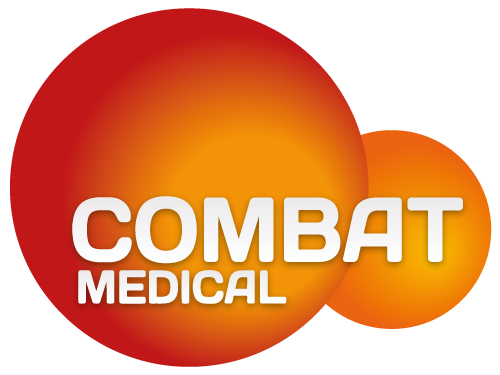Bladder cancer is among the most common types of cancer, with varying degrees of invasiveness. Non-muscle-invasive bladder cancer (NMIBC) is a subtype where cancer cells are confined to the surface layers of the bladder wall and have not invaded the muscle layer. This differentiation is crucial as it dictates the treatment approach and prognosis.
In understanding NMIBC, it’s essential to recognise the critical role of early diagnosis. NMIBC typically presents symptoms like hematuria (blood in the urine) and frequent urination. Early detection often leads to a better prognosis and a wider range of treatment options.
Current Treatment Options for NMIBC
NMIBC is traditionally treated with surgical interventions and intravesical therapies, where chemotherapy drugs are introduced directly into the bladder. However, these treatments can have limitations, including recurrence rates and side effects.
While surgical interventions, such as transurethral resection of bladder tumours (TURBT), are effective in removing visible tumours, the risk of recurrence remains high. Intravesical Bacillus Calmette-Guérin (BCG) therapy has been a standard post-surgical treatment, but its effectiveness varies, and it can lead to uncomfortable side effects.
What is Hyperthermic Intra-Vesical Chemotherapy (HIVEC)?
HIVEC is an innovative approach combining chemotherapy with hyperthermia (heated treatment). Unlike traditional intravesical chemotherapy, HIVEC involves heating the chemotherapeutic agent, enhancing its efficacy against cancer cells.
In HIVEC, the chemotherapy drug, often Mitomycin C, is heated to a temperature typically between 40°C to 43°C. This procedure is performed in a clinical setting and takes about an hour, during which the heated drug is circulated within the bladder.
The Science Behind HIVEC
Hyperthermia in cancer treatment works by increasing the temperature of the tissue, which can make cancer cells more susceptible to the effects of chemotherapy. HIVEC targets cancer cells more effectively and reduces the likelihood of harming normal cells.
The rationale for combining heat with chemotherapy is based on the principle of synergism. Heat can enhance the absorption of the chemotherapeutic agent by the bladder mucosa and also increase the susceptibility of cancer cells to the drug. Moreover, hyperthermia itself can cause direct damage to cancer cells.
Clinical Studies and Efficacy of HIVEC
Several clinical trials have shown promising results for HIVEC in treating NMIBC. These studies highlight not only the effectiveness of HIVEC in reducing recurrence rates but also its safety profile.
Research indicates that HIVEC can significantly reduce the risk of NMIBC recurrence. For instance, a study published in the “Journal of Urology” demonstrated a reduction in recurrence rates compared to traditional intravesical chemotherapy. Furthermore, patients undergoing HIVEC experienced a longer recurrence-free survival period.
See: https://www.ncbi.nlm.nih.gov/pmc/articles/PMC8994727/
Guerrero-Ramos et al. HIVEC versus BCG in high-risk non-muscle-invasive bladder cancer, published 17th Jan 2022.
In this clinical trial, HIVEC was administered using the Combat BRS system.
Furthermore, the tolerability of HIVEC has been commendable, with most patients experiencing mild to moderate side effects that are manageable within a clinical setting.
Advantages of HIVEC
One of the key benefits of HIVEC is its higher efficacy compared to traditional treatments, with fewer side effects reported. It has also shown to improve patient quality of life, which is a significant consideration in cancer treatment.
Aside from clinical efficacy, HIVEC is noted for its safety profile. The localised application of heat and chemotherapy reduces systemic side effects commonly associated with conventional chemotherapy. Patients generally tolerate HIVEC well, with fewer reports of systemic toxicity.
The primary advantage of HIVEC lies in its enhanced efficacy. The synergistic effect of chemotherapy and hyperthermia not only improves the effectiveness of the drug but also potentially reduces the required dosage, leading to fewer systemic side effects. This aspect is particularly crucial for patients who may not tolerate the harsher side effects of conventional chemotherapy. Additionally, the local application of chemotherapy minimises systemic exposure, further reducing unwanted side effects.
With fewer and less severe side effects, patients are able to maintain a more regular lifestyle during treatment. This advantage cannot be overstated, as the psychological and physical well-being of patients is paramount in cancer treatment.
The Future of HIVEC in Bladder Cancer Treatment
The future of HIVEC is promising and subject to ongoing research. Current studies are focusing on optimising treatment protocols, such as determining the ideal temperature and duration of hyperthermia, and identifying the most effective chemotherapy agents to use in conjunction.
Moreover, there’s growing interest in exploring the potential of HIVEC in treating other forms of cancer where localised treatment can be beneficial. This expansion of its application could revolutionise the approach to cancer treatment in other areas as well.
HIVEC – The Future of Cancer Treatment?
Hyperthermic Intra-Vesical Chemotherapy represents a significant step forward in the treatment of non-muscle-invasive bladder cancer. By offering a more effective, tolerable, and patient-friendly option compared to traditional therapies, HIVEC improves not only the clinical outcomes but also the quality of life for patients. As research continues to advance, the full potential of HIVEC in bladder cancer and possibly other cancers remains an exciting prospect for the medical community.
Seven great reasons to use hyperthermia in non-muscle-invasive bladder cancer (NMIBC) treatment:
1) Therapeutic hyperthermia involves the application of temperatures ranging from 41°C to 44°C. Cancer cells are more vulnerable to heat than healthy cells, making this technique particularly effective. The combination of chemo-hyperthermia produces a synergistic outcome, significantly enhancing the potency of chemotherapy when compared to administration at room temperature.
2️) Mitomycin C remains stable up to 50°C and demonstrates 1.4 times greater activity at 43°C.
3️) Hyperthermia obstructs the development of new blood vessels (angiogenesis) by the tumour mass.
4️) A 10-fold increase in cytotoxicity is observed at 43°C without any additional toxicity to the patient.
5️) Elevated temperatures cause the cancer cell’s lipid-protein cell membrane bilayer to become more permeable due to denaturation of cellular membrane and cytosolic proteins.
6️) This leads to an increased intracellular concentration of the chemotherapy drug, directly affecting the cancer cell’s DNA – causing strand breaks, hindered transcription, and reduced replication and cell division.
7️) Thermotherapy also has a significant impact on the immune system, enhancing the activation of natural killer cells (NKC) that target any cancer cells displaying heat-shock proteins on their surface. Consequently, the cancer cells contribute to their own destruction through the natural apoptosis process.
The COMBAT BRS (Bladder Recirculation System) is the first system designed to enable thermotherapy (HIVEC®) delivery within precise parameters that optimises chemo-hyperthermia without compromising patient safety, comfort or additional resource requirements.

